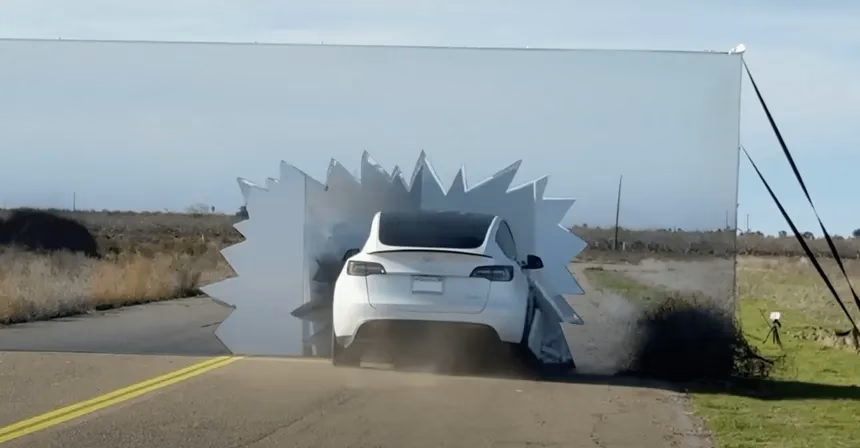Tesla’s Full Self-Driving (FSD) technology continues to be one of the most debated and anticipated innovations in the automotive industry. From autonomous capabilities to safety concerns, Tesla’s FSD has seen constant improvements but remains a hot topic among experts and regulators.
With the latest updates and real-world tests, including the controversial Wile E. Coyote YouTube test and Tesla’s Cybertruck integration, the question remains: Is Tesla’s FSD the future of autonomous driving? In this article, we’ll dive deep into Tesla’s FSD technology, its progress, challenges, and what the future holds.
1. What is Tesla Full Self-Driving (FSD)?
The Evolution of Tesla’s Autopilot and FSD
Tesla introduced Autopilot in 2014, an advanced driver assistance system (ADAS) that laid the foundation for its self-driving ambitions. Over the years, Tesla has introduced several key features under the FSD Beta program, aiming to make its vehicles fully autonomous.
Key milestones include:
- 2016 – Introduction of the first-generation Full Self-Driving hardware.
- 2019 – Launch of FSD Beta, allowing select users to test Tesla’s most advanced self-driving features.
- 2023 – Expansion of FSD Beta to all Tesla owners in North America.
- 2024 – Ongoing software refinements and expanded AI capabilities.
How FSD Works
Tesla’s FSD relies on neural networks, real-time AI processing, and vision-based computing to navigate roads without human intervention. Unlike competitors using Lidar and radar, Tesla’s approach is camera-based, emphasizing visual perception to mimic human driving.
FSD capabilities include:
- Autonomous lane changes
- Traffic light and stop sign recognition
- Smart summon (remote vehicle movement)
- City streets navigation
- Highway driving with minimal intervention
2. The Wile E. Coyote YouTube Test: A Reality Check?

What Happened?
Recently, a YouTuber conducted a controversial real-world test of Tesla’s Full Self-Driving by placing a cardboard cutout of Wile E. Coyote in front of a moving Tesla to evaluate how the system reacts to unexpected obstacles.
Findings & Concerns
- The FSD detected and slowed down for the object, proving its obstacle recognition system is functional.
- However, it struggled with certain edge cases, raising concerns about how Tesla’s vision-based AI perceives unusual objects.
- Some experts worry that FSD’s reliance on neural network training data might cause unpredictable behavior in unique situations.
3. Cybertruck & FSD: A Perfect Match?
With the Cybertruck rolling out in 2024, Tesla has confirmed that its Full Self-Drivingsoftware will be fully compatible with the new electric truck. The Cybertruck’s design and sensor placement create both opportunities and challenges for autonomous driving.
Cybertruck’s FSD Features
- Higher ground clearance, giving Full Self-Driving a better vantage point.
- New AI-driven adaptive suspension, improving ride stability.
- Enhanced camera and sensor array, potentially increasing FSD accuracy.
- Integrated hardware for off-road autonomy, making it Tesla’s most versatile vehicle for self-driving.
While these upgrades make Full Self-Driving on Cybertruck promising, real-world performance is yet to be fully tested.
4. Safety & Ethical Concerns: Can FSD Be Trusted?
Regulatory Scrutiny
Tesla’s FSD has faced multiple investigations from agencies like the NHTSA (National Highway Traffic Safety Administration) and California DMV. The primary concerns include:
- Edge case failures, such as unusual road scenarios.
- Over-reliance on human supervision, requiring driver intervention in complex situations.
- Misleading terminology, as Tesla’s FSD still requires an attentive driver.
Public Perception & Accidents
- Several accidents involving Tesla vehicles in Full Self-Driving mode have raised safety concerns.
- Critics argue that calling the system “Full Self-Driving” is misleading, as it is not fully autonomous (Level 5 autonomy).
- Tesla continues refining FSD, but the question remains: When will it be truly autonomous and safe for all roads?
5. AI & Machine Learning: The Backbone of Tesla FSD
Tesla’s self-driving technology is powered by one of the world’s most advanced neural networks, trained using millions of miles of real-world driving data.
Key AI Technologies in FSD
- Tesla Dojo Supercomputer – Powers Tesla’s neural network training.
- End-to-End Deep Learning Models – Enabling continuous self-improvement of FSD.
- Vision-Based Object Detection – No reliance on Lidar or radar, only AI-driven vision processing.
Tesla’s approach to AI-driven driving is revolutionary, but it also faces significant challenges, especially in rare or unpredictable scenarios.
6. The Future of Tesla FSD: What’s Next?
Tesla Robotaxi & Next-Gen FSD
Elon Musk has hinted at a fully autonomous Tesla Robotaxi service, powered entirely by next-generation FSD software.
Potential features include:
- Completely driverless taxis in select cities.
- Subscription-based FSD model for all Tesla vehicles.
- AI-driven ride-sharing platform, competing with Uber and Lyft.
FSD Expansion in Other Vehicles
While currently exclusive to Tesla, rumors suggest that Tesla might license FSD to other automakers in the future.
Final Thoughts
Tesla’s Full Self-Driving technology represents the future of autonomous vehicles, but it is still evolving. While AI-driven innovations, Cybertruck integration, and Tesla’s ambitious Robotaxi plans paint an exciting future, safety concerns, regulatory scrutiny, and real-world reliability remain major challenges.
Will Tesla’s FSD become the gold standard in self-driving technology? Only time will tell, but one thing is certain – the future of autonomous driving is closer than ever! 🚗⚡
Read More : MacBook Air M4 Review: A Powerful Upgrade or Just an Iteration?
FAQs
Is Tesla FSD really “Full Self-Driving”?
No, Tesla’s FSD is still Level 2 autonomy, meaning it requires a human driver to remain attentive at all times. Full Level 5 autonomy is still years away.
Will Tesla’s FSD become safer than human drivers?
Tesla claims that its FSD will eventually surpass human driving safety. However, regulatory approvals and long-term testing will determine its true safety levels.


